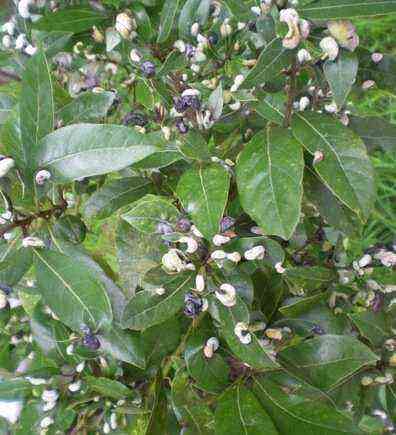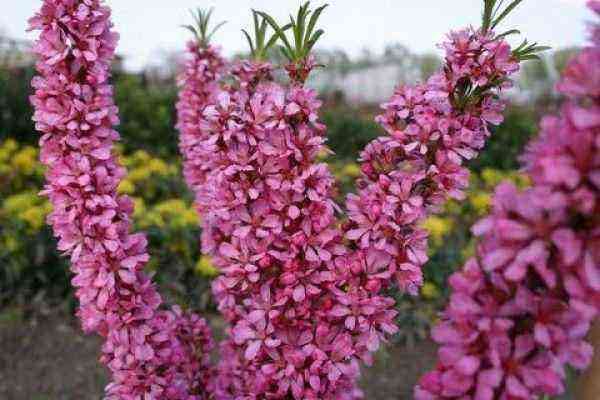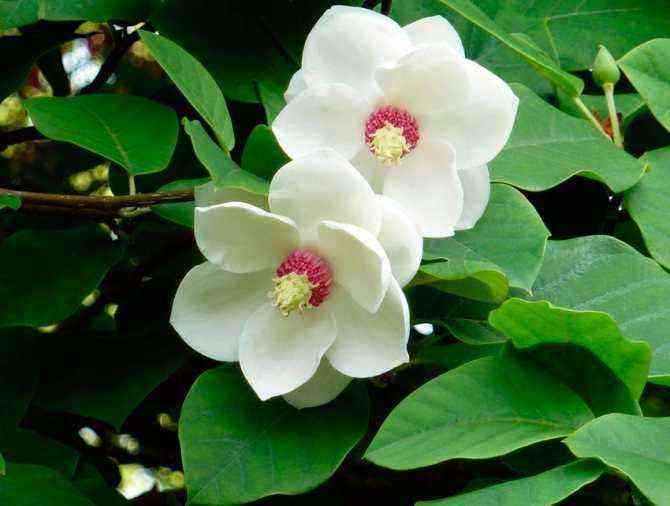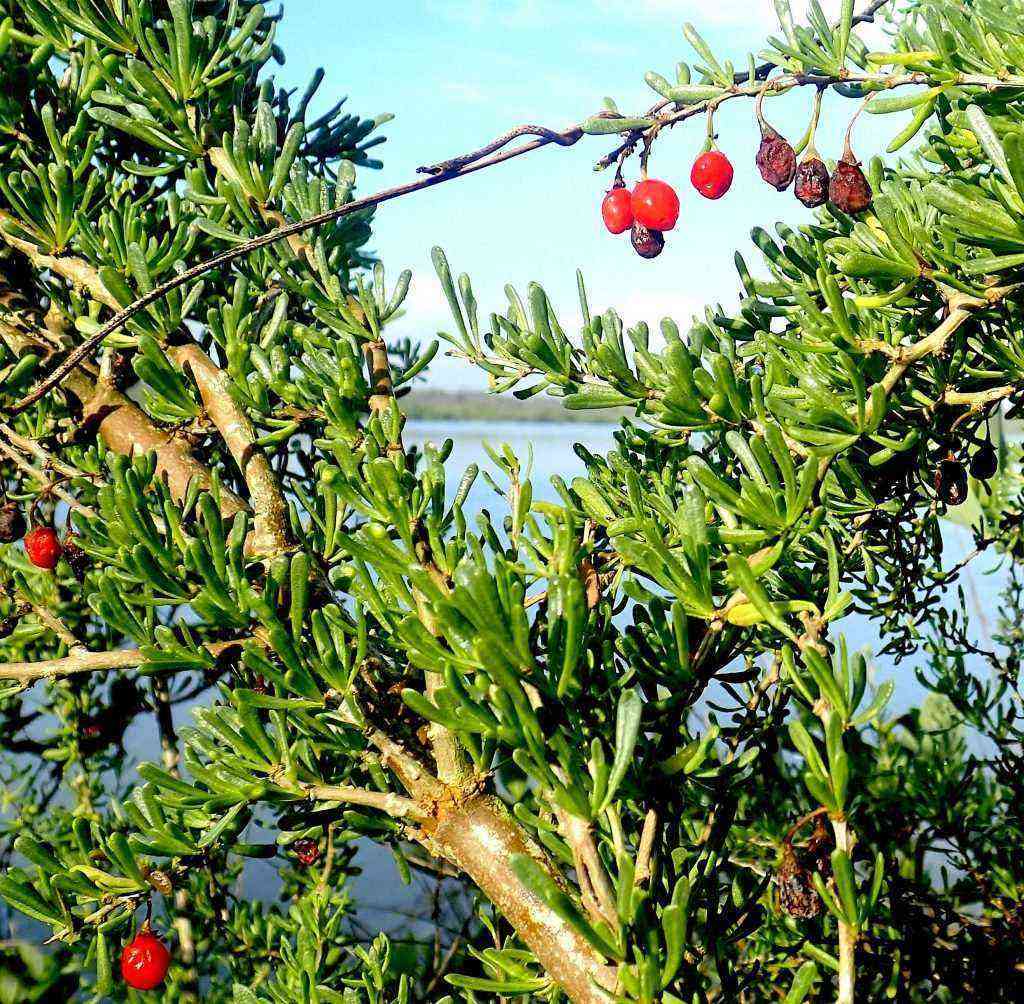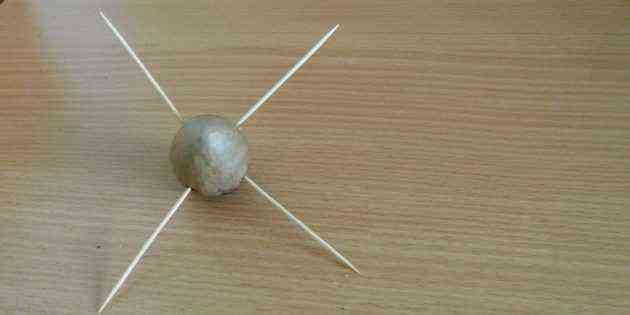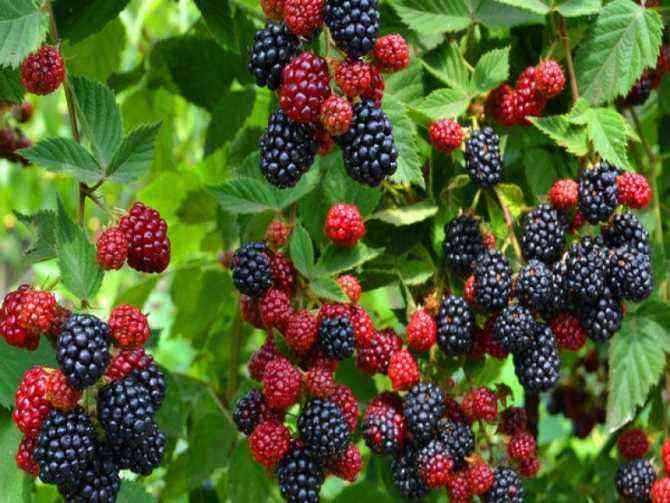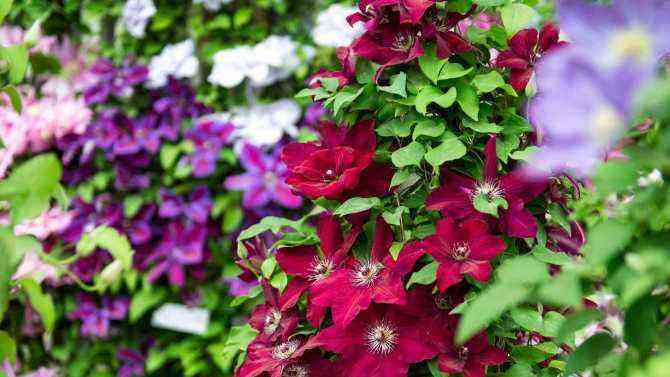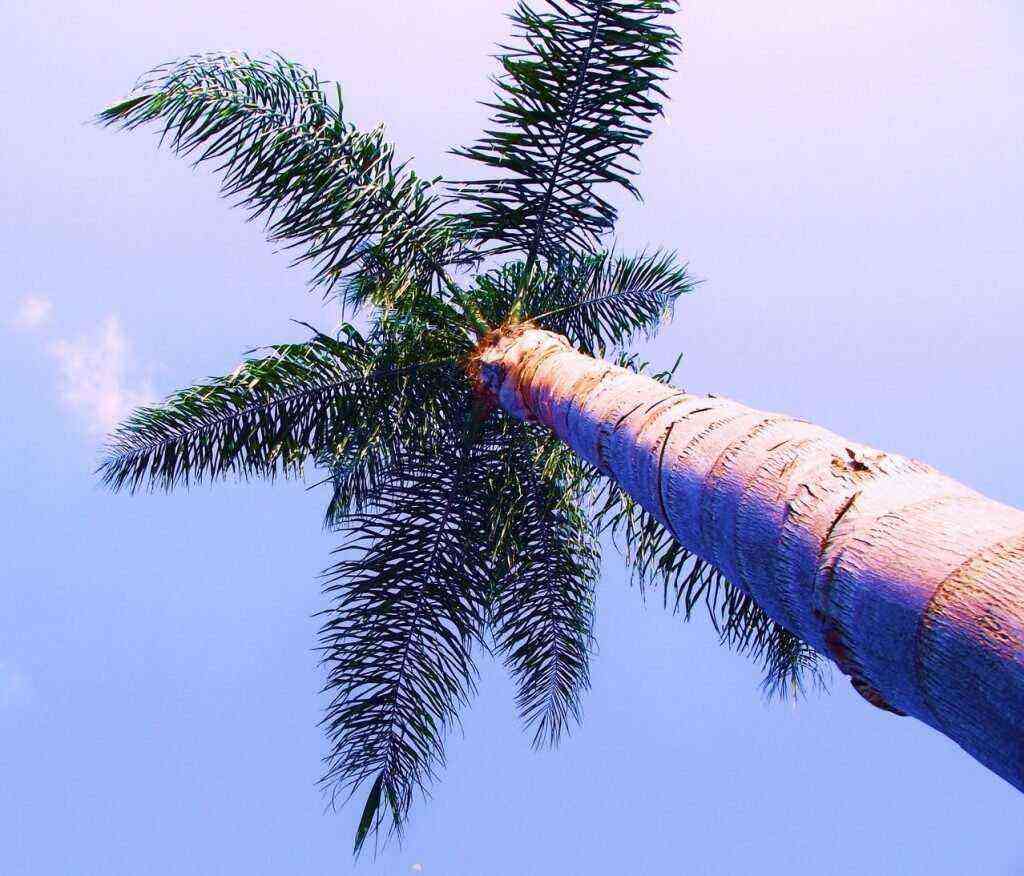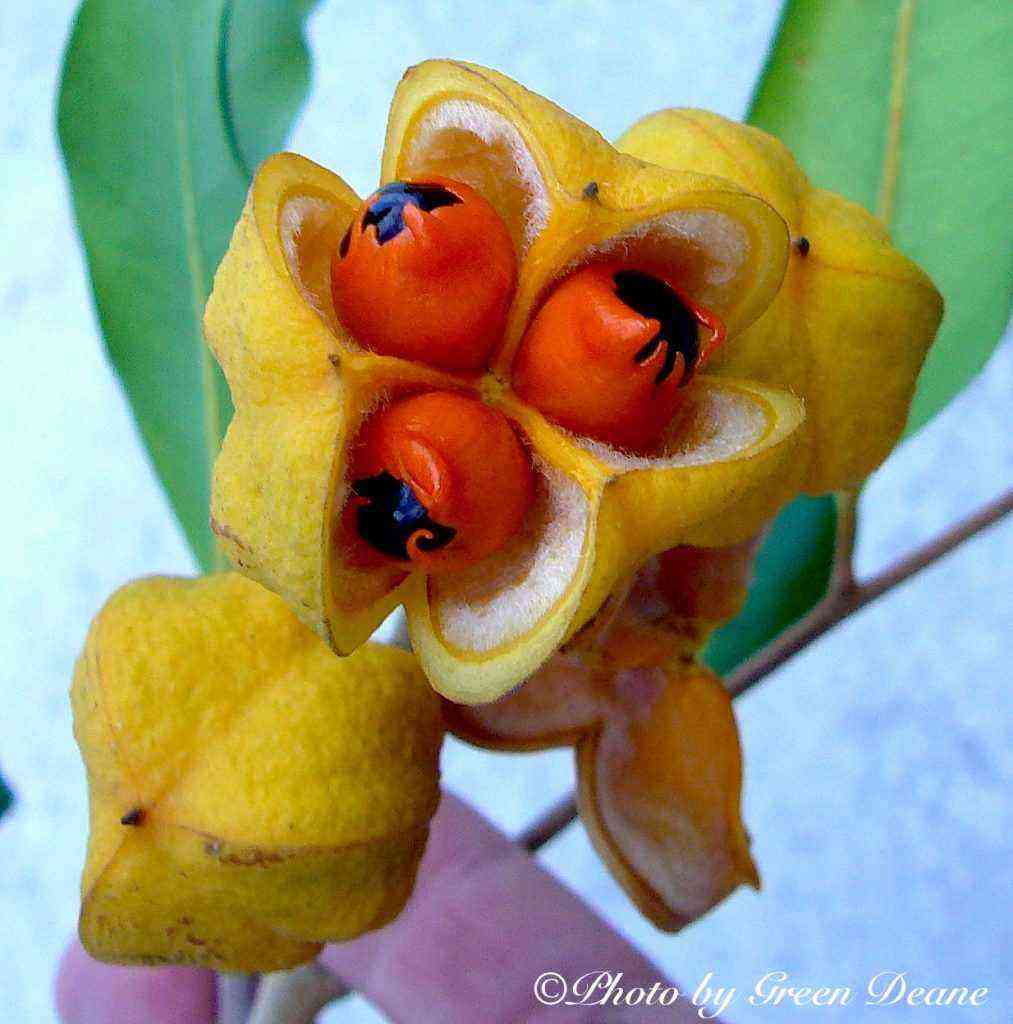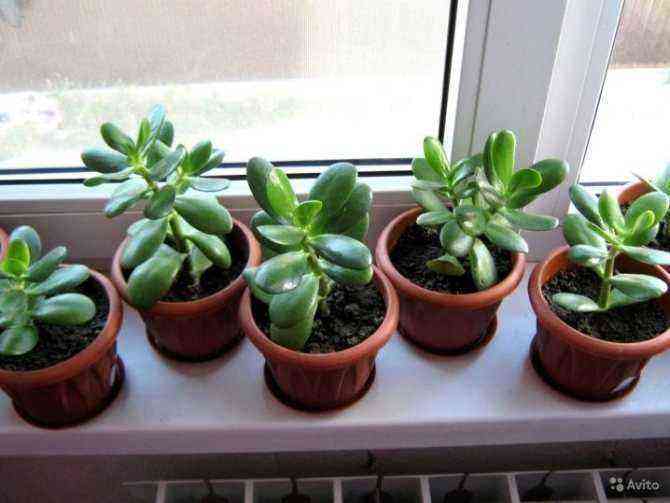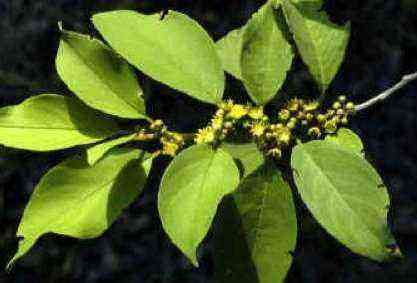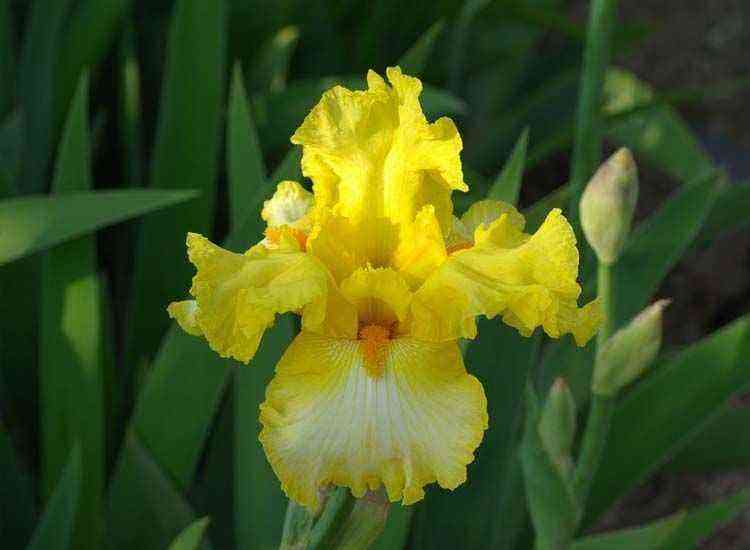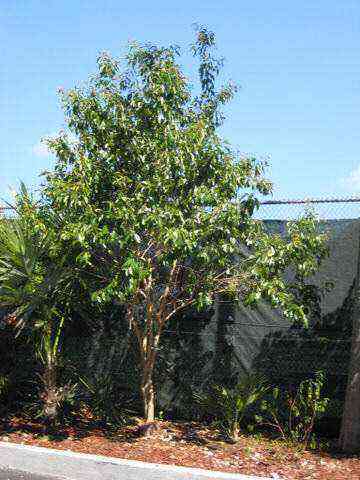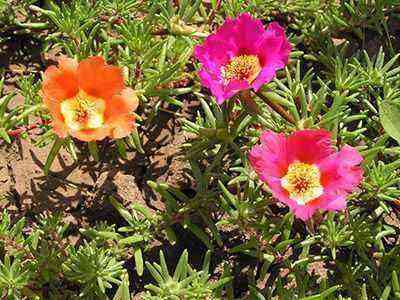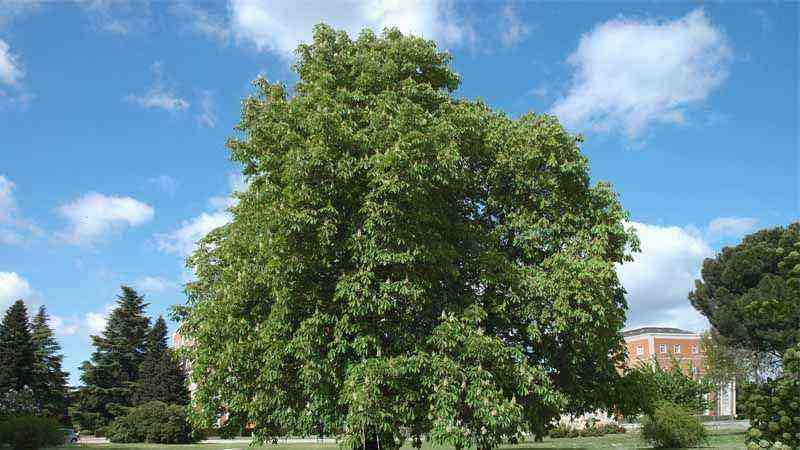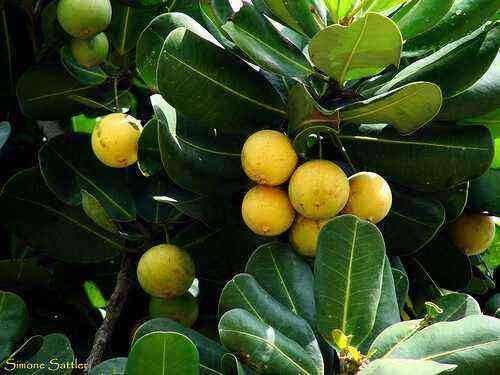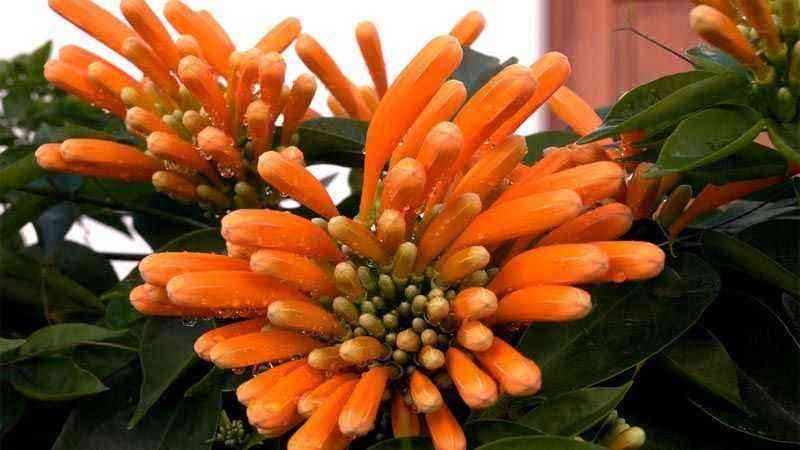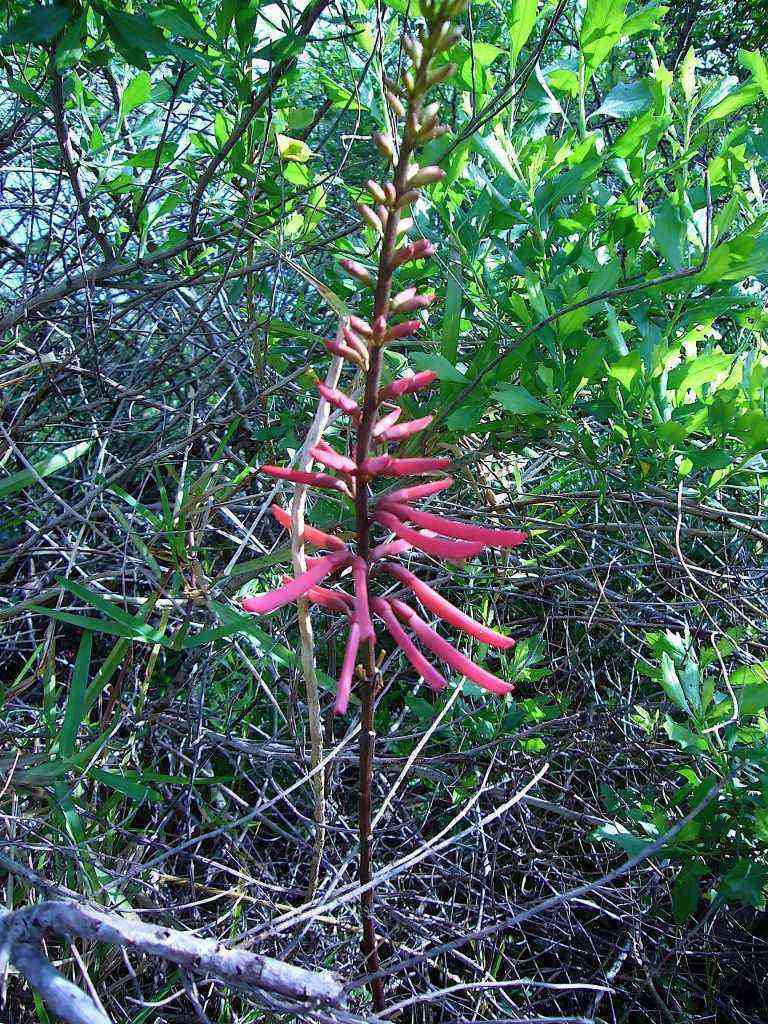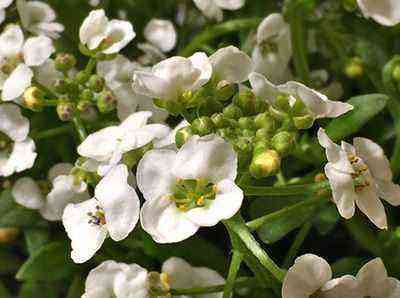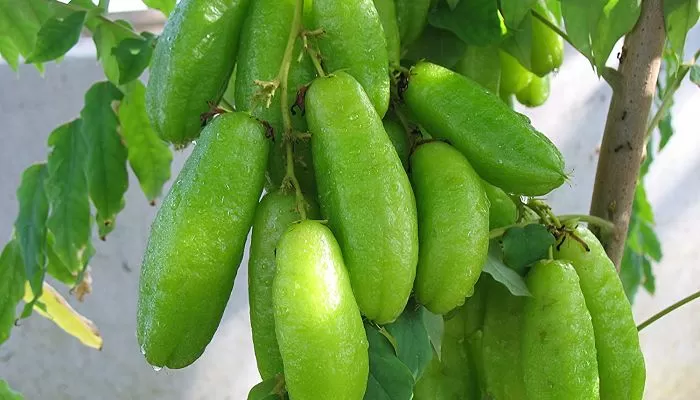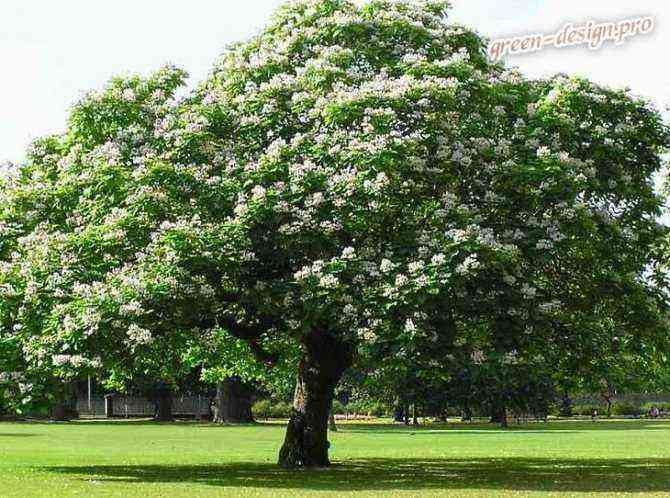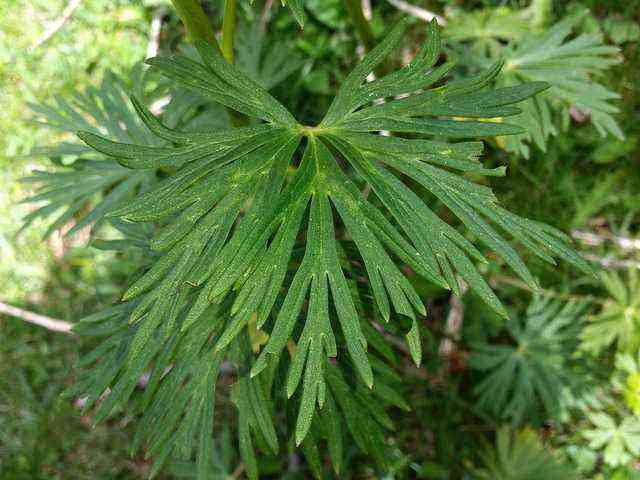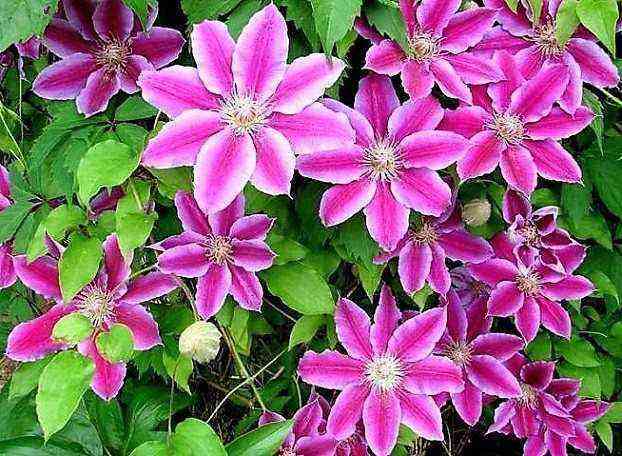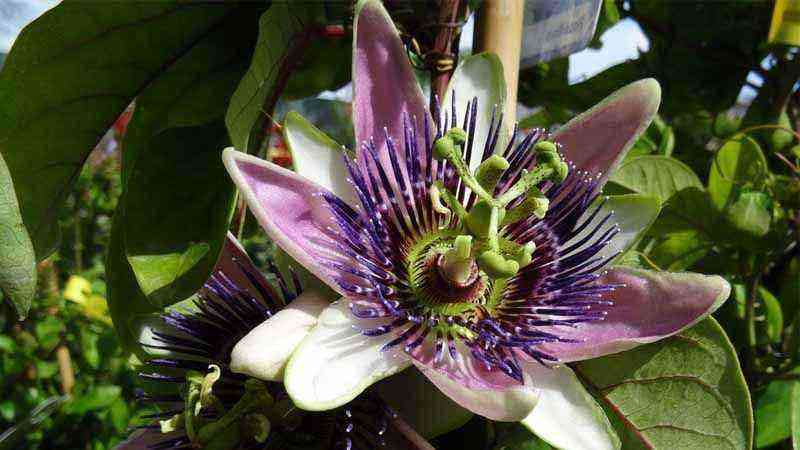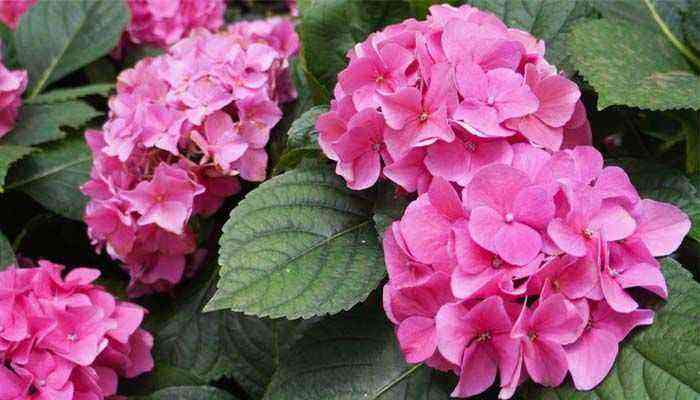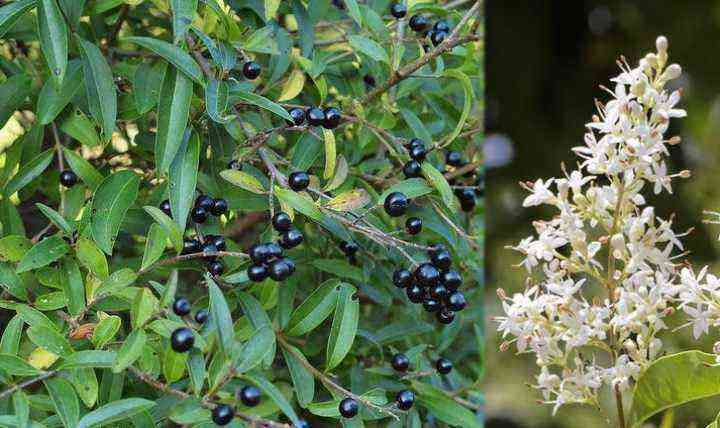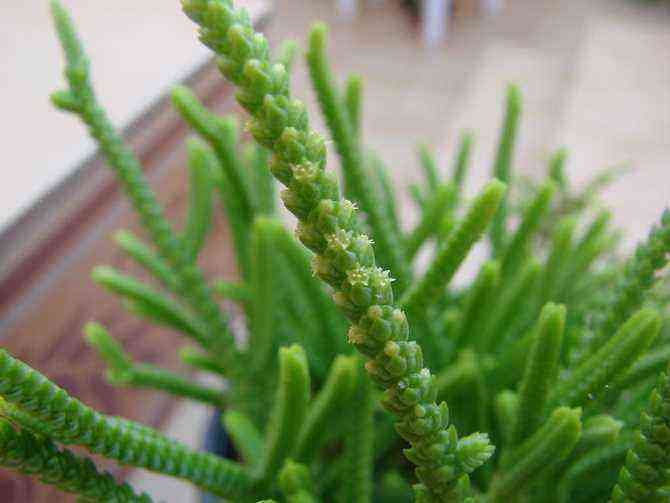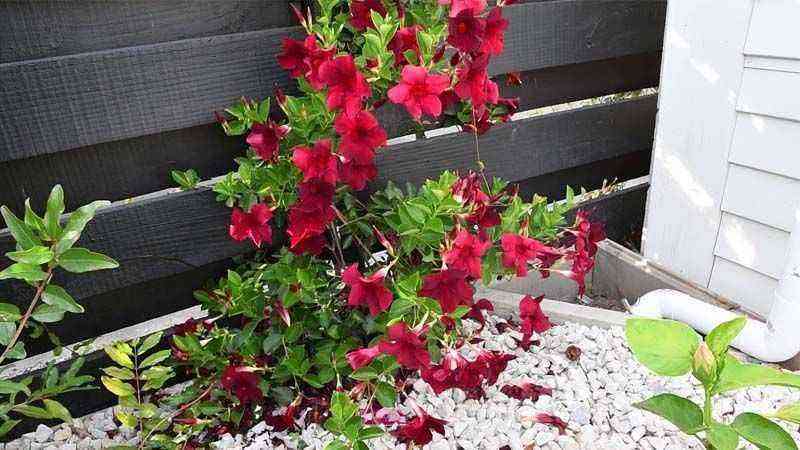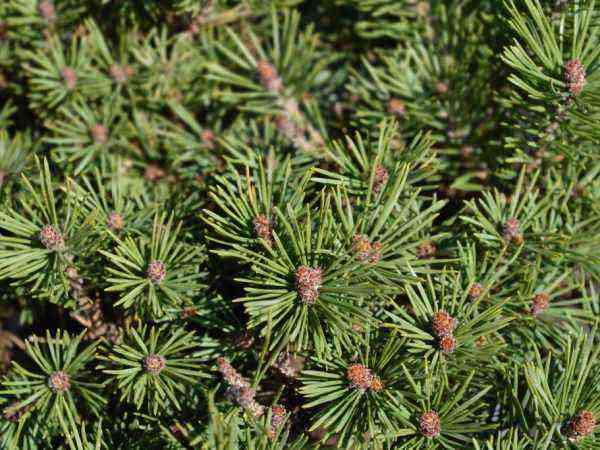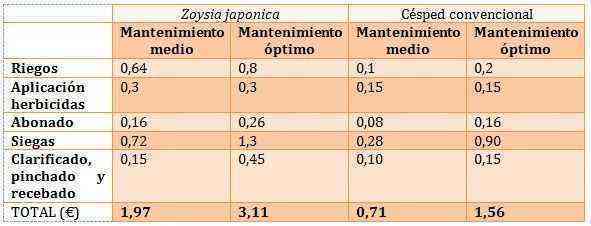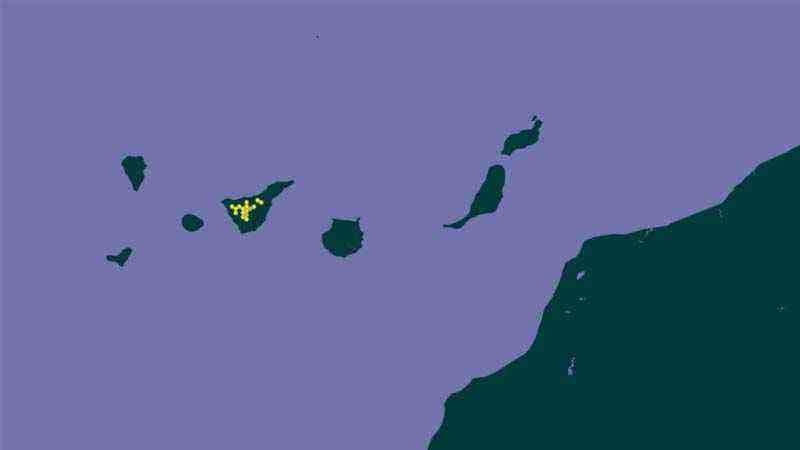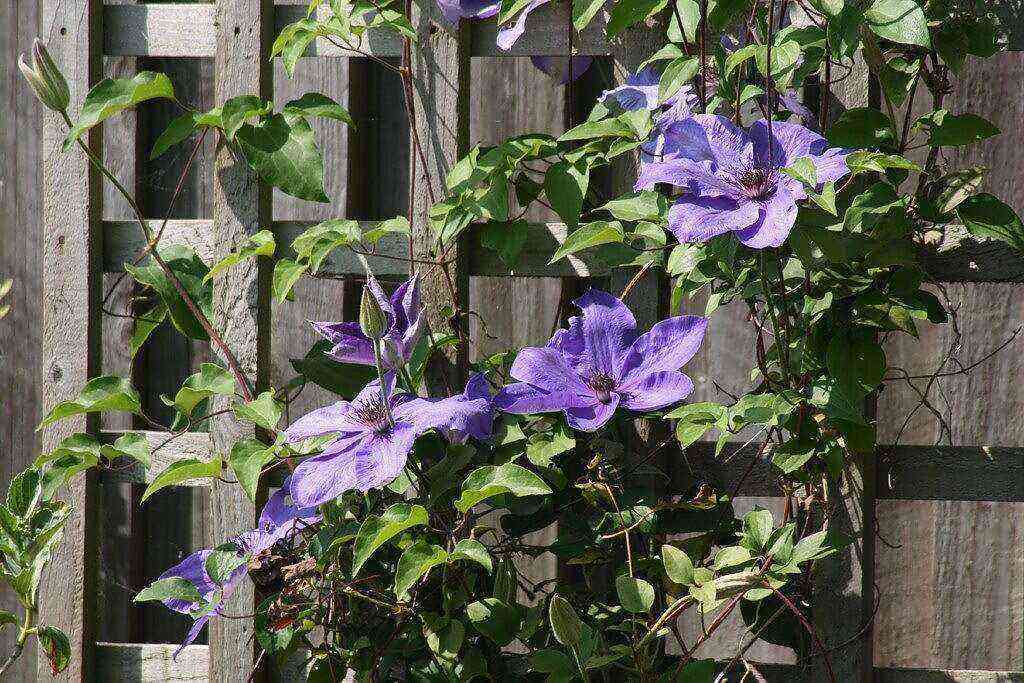Evergreen conifers are a practical choice for decorating your home garden, as they retain their decorative properties throughout the calendar year. Canadian hemlock, or Tsuga canadensis, is one such plant. It represents the genus of conifers, the pine family.
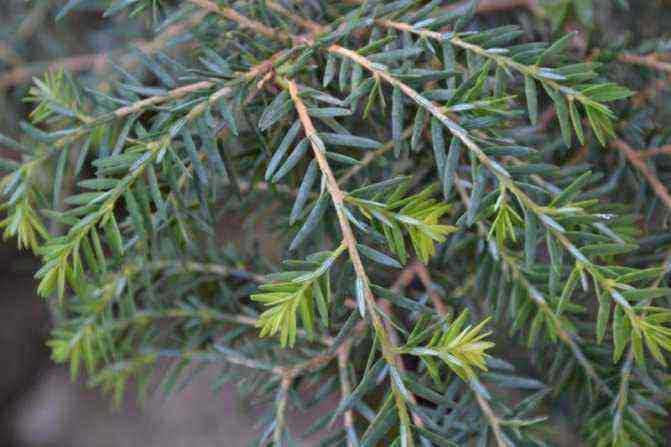
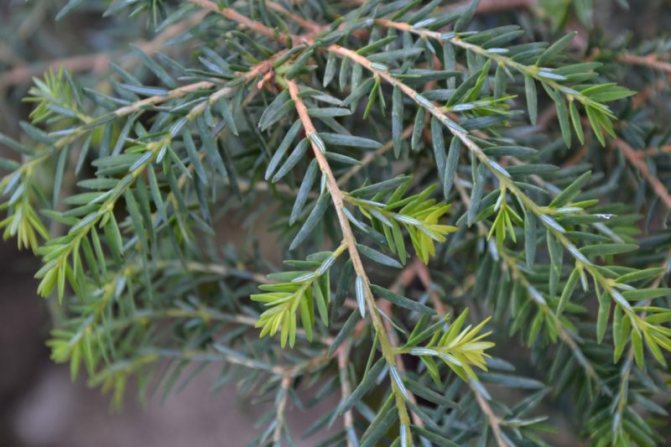
You can decorate the territory with a lonely growing Canadian hemlock, and a whole group of conifers as part of a composition or a hedge. This tree is also used to create green sculptures. Its crown with the help of solid or spot trimming can be given various shapes.
Cultivation
Canadian hemlock is grown in parks and gardens as an ornamental crop. Bushy forms are used to create hedges, and large specimens are used in single or group plantings.
Plants are planted in spring or mid-autumn. The soil is preferable wet, with a high clay content. Approximately 3 days before planting, mineral fertilizers and humus are applied to the soil. For planting, they usually use small, but well-formed, strong specimens with a compact clod of earth that protects the root system. If planting is group, it is necessary to take into account the distance between trees. Space for normal development there should be at least one and a half meters between the seedlings. The following sequence is observed when planting young plants:
- A pit is prepared with a depth of 75 centimeters.
- To ensure good drainage, the bottom of the pit is covered with a 15 cm layer of sand.
- A small layer of soil mixture is laid out on top, consisting of leafy, soddy earth and sand.
- A seedling is lowered into the pit so that the root collar is at the level of the edge of the pit and covered with earth.
- Then the plant is well watered (no less than a bucket of water for each seedling) and mulched with bark or wood chips.
The hemlock is a shade-tolerant plant, but at the same time it needs moist air. In the hot season, it is advisable to sprinkle twice a week and, if necessary, water.
Canadian hemlock (Canadian pine) is resistant to both low and high temperatures. However, in cold regions, it is advisable to cover young plants in November with peat and dry branches. In April, the shelter can be removed.
Mr. Dachnik recommends: hemlock in landscape design
In landscape design, hemlock looks good in combination with deciduous trees and shrubs with lighter foliage. It can be used for symmetrical layout, as well as in group (in the form of alleys) and solitary plantings. Tall trees are often used as hedges.
The hemlock tolerates pruning well. Dwarf cascading forms suitable for rock gardens are very popular. The need for moderate moisture allows you to decorate ponds with a plant. The dense crown protects delicate plants from the heat, allowing them to grow in comfortable conditions, and slow growth is an important advantage in landscape design.
Canadian hemlock varieties
The following varieties are most common:
- Jeddeloh is a semicircular dwarf plant with branches arranged in a spiral. The needles are small, light green. The crown is cushion-shaped, dense.
- The dwarf variety of this plant, Nana, does not exceed a meter in height. The needles are green, glossy, up to two centimeters long, the branches are dense, short, hanging arcuate.
- The weeping form is represented by Pendula. It is a wide tree with many trunks. Branches depart at right angles from the trunk, and then hang sharply, which makes it possible to create standard specimens by grafting Pendula onto a straight stem of the stock.
What is “hemlock” and what does it look like
The genus Tsuga includes more than 20 species of conifers. But only the Canadian hemlock, due to its winter hardiness, is optimally suited for the temperate climate of Russia, so its various forms are popular with designers. The tree got its specific name from the distribution area, the generic name came from a species growing in Japan.
On the territory of the Russian Federation, there are no seedlings in mass sale, you will not see decorative forms in parks or squares. Canadian hemlock is a brand of popular landscape designers in Moscow, Moscow region, St. Petersburg. The culture can be found in the botanical gardens of Tver and Voronezh universities, in the arboretum of Sochi.
Description of the classic Canadian hemlock (pictured):
- A tree with a regular conical, stepped crown, spreading. The branches grow horizontally, the tops are lowered. Height is about 20-23 m. The trunk is upright, tapering towards the crown, the diameter of the lower part is 70-110 cm.
- The bark of the skeletal branches and trunk of the young ephedra is dark brown with a burgundy tint, the structure is scaly. With age, it becomes stiff, thickened, with longitudinal deep grooves.
- The branches are short, the lower ones are formed not high above the ground. Hemlock’s shoots are thin, drooping.
- The needles are small, flat, with a rounded top, dark green, on the lower part there are 2 longitudinal light lines. The needles are densely located on the shoots.
- The culture is monoecious, forms female light green and male yellow small rounded strobilae.
- Cones are oval, oblong, 2,5 cm long, formed at the tops of the shoots. The color is light brown with a gray tint. Ripen during the year, crumble the next season.
- Seeds are small, oval, with lionfish.
The first male strobila appear after 20 years of vegetation. The tree is entering reproductive age. The seeds ripen by October and fly away. They can germinate in the spring or remain dormant until the next season.
How quickly the Canadian hemlock grows
This species grows very slowly, especially in the first decade. By the age of 15-20, the height of the Canadian hemlock does not exceed 8-10 m. In the future, the annual growth slightly increases, but depends on the growing conditions. The tree is one of the longest-livers in the world of flora, its biological cycle lasts more than 500 years.
Reproduction
In culture, hemlock is more often propagated by cuttings, but seed propagation is also possible. To create original forms, grafts are used on the main view.
Decorative specimens are propagated by semi-lignified cuttings. In September, they are cut from the side shoots and planted in a ground mixture in an unheated room. When the roots are formed, the seedlings are planted in pots one at a time, and young plants are planted in open ground after 2 years.
Seeds are sown in the ground in a sheltered place. The grown seedlings are seated in separate containers. And they are planted in a permanent place after 2-4 years, depending on the type.
Hemlock care
When planting, fertilizer is added to each planting hole.
Hemlock are hygrophilous, they need regular watering. They do not tolerate dry air, they are recommended to be sprayed from a hose. Hemlock grows best near water bodies. Loosening is shallow, about 10 cm.
The hemlock grows slowly, so it does not need pruning. In the first two years, young seedlings should be covered with peat and spruce branches for the winter. Redness of needles in winter from frost does not harm the plant. Lapnik saves plants from sunburn.
Sources used:
- https://mrdachnik.com/tsuga
- https://mrdachnik.com/tsuga
Diseases and pests
The insects that the hemlock suffers from:
- The larvae of the hemlock moth feed on the needles of the plant. The needles of the affected tree turn brown and fall off.
- The growth of trees is inhibited by the scale insect of pine needles.
- The spider mite causes the appearance of brown spots and, accordingly, the loss of decorativeness.
- The hemlock needles tick provokes yellowing, and then the needles fall off, sucking out the plant juices.
- Adelges tsugae is perhaps the most dangerous pest, resistant to adverse factors and capable of rapidly multiplying. This small insect infects forests over vast areas, destroying the plant’s nutrient reserves and hindering the development and growth of trees.
Hemlock diseases are mainly fungal… Root rot is most commoncausing growth retardation and plant death.
In the natural habitat, some rodents become pests that damage the bark. The American white hare can chew the bark of a young tree completely.
The plant will be less susceptible to disease and pest attacks if the hemlock is grown on non-calcareous, sufficiently moist soil, in a place protected from the wind.
Description:
This small genus includes about 9-14 species of evergreen tall monoecious trees with a conical crown, wider and often uneven in old age, and hanging thin shoots, with deeply grooved and branching small bark plates.
Tsuga canadensis ‘Ashfield Weeper’
Photo of Kirill Tkachenko
Such species as Himalayan hemlock (Tsuga dumosa), Taiwanese hemlock (T. formosana), western hemlock (G. heterophylla) reach 40-60 m in height. Shoots are grooved or smooth, the apical ones are poorly developed. The kidneys are very small. Cones are small, usually hanging, ripen in the first year, do not decay when ripe and fall off only in another year. Seed scales are thin woody and rounded. Covering scales do not exceed seed scales in length and are much narrower. They are whole-edged, finely toothed, or slightly notched at the top. Seeds are small, on the surface with resinous glands, with a long wing. The needles in almost all species are flattened, linear-lanceolate, on the lower surface with 2 white or whitish stripes of 4-10 stomatal lines each, narrowed at the base into a short petiole attached to a towering leaf cushion. The needles along the edge can be whole-edged or fine-toothed. Propagated by seeds or cuttings, more rare species can be propagated by grafting on Canadian hemlock.
Hemlock species are common in East Asia from the Himalayas to Japan and North America. Most of the species are considered resistant in culture and winter hardy and deserve testing in Russia. In neighboring Scandinavian countries with a similar climate, some hemlock species, which are still absent in Russian gardens and nurseries, are used not only in landscaping, but also on forest plantations. The hemlock is demanding on moisture and soil fertility, is not drought-resistant, does not tolerate dry air, and is shade-tolerant. Poorly tolerates the transplant. It grows slowly, so it does not need pruning. In the summer in the garden, young plants need regular watering. It is good to plant them near water bodies, but not in swampy soil with stagnant moisture, it needs good drainage. Gives a thick shadow. The hemlock is a very graceful, graceful tree with thin twigs with weeping ends. With suitable conditions and proper care, it can decorate the park, garden and site.
| Tsuga canadensis ‘Moll’ Photo of Kirill Tkachenko |
| Tsuga Canadian – Тsuga canadensis Carr. Homeland of the eastern part of North America. In the mountains it forms pure and mixed stands. Tsuga canadensis In St. Petersburg since 1861, it is relatively winter-hardy in sheltered places, in some winters the needles and tops of the shoots can be damaged, and occasionally forms cones. Available in the collections of the Botanical Gardens BIN and LTA. It can be grown on the Karelian Isthmus, much to the north of St. Petersburg, as evidenced by the experience of introducing this type of hemlock at the Otradnoye scientific experimental station in the vicinity of Pri-Ozersk. Needs fresh deep fertile soil. In GBS since 1947, 6 samples (308 copies) were obtained by 7-year-old seedlings from Potsdam, Eberswald (Germany), grown from seeds from the Trostyanets arboretum (Ukraine), Batumi, Riga. The tree, at 38 years old, height 13,3 m, trunk diameter 25-30 cm. Vegetation from 5.V ± 7. Dust from 8.V ± 4 during the week, rarely up to 10 days (in cloudy cold spring). The seeds ripen at the end of October. Propagated by seeds and cuttings. Average winter hardiness. Seed germination rate is 42%. 40% of winter cuttings, treated with a 0,01% solution of IMC for 24 hours, take root. It does not occur in the landscaping of Moscow. Tsuga canadensis ‘Stranger’ The appearance is attractive. The plant is graceful, loose, usually 1,5-2 m, rarely 3 m. The ends of the shoots are yellowish-white. The needles are normal, yellowish when blooming, gray-green in the 2nd year, later – completely green. “Aura”. Squat plants, the tops of the shoots are bent, golden yellow, later, however, green. «Вennett» … Dwarf form, appearance is the same as in Pisea abies “Nidiformis”, summer shoots are almost fan-like spreading; the annual growth is only about 15 cm. The needles are 1 cm long, usually short, tightly set, light green. Appeared around 1920 in M. Bennett’s nursery, Highlands, New York, USA. “Compacta” … Known in culture since 1868. Very old specimens reach 3 m in height with the same width. The shape is regular, conical, bushy, densely booted, with short shoots. In the Botanical Garden BIN since 1998 (bringing cuttings by A. V. Kholopova from Hamburg, Germany). Tsuga canadensis ‘Curly’ … Dwarf wide-gled form; beautiful branches, firmly standing. The needles are pure white in spring and early summer, and later gradually turn green. Appeared around 1890 in Morris Arboretum, USA. «Gracilis» … Very beautiful shape; twigs and branches slightly curved or hanging. Leaves are 6-8 mm long. England. «Gracilis Oldenburg». Dwarf form, growing very slowly (at 10 years old, height about 25 cm, crown diameter 40-50 cm, at 75 years old, height 2 m), semicircular crown first with a nest-like depression in the middle. The tops of the shoots are drooping, the shoots are very short. The needles are dark green, 6-10 mm long. The origin is unknown, but first spread by Heinrich Bruns, Westersted. This plant was brought to the Oldenburg nursery as “Nana gracilis”, but illegally, because from 1862 there was already “Gracilis” in England. |
Hussii
… Dwarf, especially low form; branches are highly branched. The needles are tight. Appeared at Huss, Hartford, Connecticut.
| Tsuga canadensis’Jeddeloh’Photo of Anetta Popova Jeddeloh … Dwarf semicircular shape with spirally arranged branches and an almost funnel-shaped depression. The needles are solid, 8-16 mm long and 1-2 mm wide, light green, KHN table. 145. Found in 1950 at Yeddelo; currently in Germany one of the most common dwarf forms of hemlock. |
| Tsuga canadensis ‘Macrophylla’Photo of Andrey Ganov «Мacrophylla» … The form is straight, fast-growing. The needles are larger and wider than that of the species. In France, it has been growing in nurseries since 1899. |
«Мicrophylla»
… The shape is very beautiful; branches are light, tender. The needles are 5 mm long and 1 mm wide, the stomatal canals are bluish-green (= T. canadensis parviflora). Often appears in the undergrowth. Not “Gracilis”!
| Tsuga canadensis ‘Minima’Photo of Mironova Irina “Minimum”. Height 1,5 – 2 m. Dwarf form, very slowly growing, with a loose, rounded crown. The branches are ascending, the tops are drooping, the shoots are very short. The leaves are smaller than that of the species. In culture since 1909, breeder Hesse-Wiener. |
| Tsuga canadensis ‘Minuta’Photo of Olga Bondareva «Minute» … Dwarf form, not higher than 50 cm, compressed, uneven, width equal to height; annual shoots no longer than 1 cm. Needles 6-10 cm long and 1-1,5 mm wide, dark green above, below with white stomatal canals (= T. sanadensis taxifolia) .. Found in 1927 by Frank Abbott in Green Mountain, Vermont. Propagated by seeds. |
| Tsuga canadensis’Nana’Photo of Menshova Alexandra «Nana». Dwarf form up to 1 m tall. Shoots are located horizontally, widely spread, their ends are directed downward. Branches are short, protruding. The needles are up to 2 cm in length and about 1 mm in width, from above they are shiny, green, winter-hardy, moisture-loving, shade-tolerant. Propagated by seeds and cuttings (63%). Described in 1855, widespread in Western Europe. Most likely spontaneously meets with the species. Recommended for stony areas, for parterre lawns. |
Tsuga canadensis ‘Pendula’
Photo by M. Barbuhatti
«Рarviflora»
… Dwarf form, very beautiful; branches with brown shoots. The leaves are small, 4-5 mm long, the stomatal canals are not clearly expressed. Appeared in England; often found in crops.
“Pendulla”.
Very decorative weeping shape, wide, straight, multi-barreled; branches horizontally spaced from the trunk, loose, unevenly located, not in the same plane, the ends hang down far; young shoots are cut obliquely (= T. canadensis; milfordiensis; T. canadensis sargentii pendula). It grows slowly. In culture, it is represented by various types, which have other names: Brookline – the lowest, cushion crown. Gable Weeping – Medium. Artificial form Pendula – originated in the nursery. The needles are prickly, fresh green. The sometimes used designation “Sargentiana” or “Sargentii pendula” is based on the fact that this plant, found before 1897 by Sargent in the Fishhill Mountains, New York, was cultivated under this name. Usage: single landings
Prostrata
… Low-lying form. There is an image in the Hemlock arboretum, Balletin, 35, 1941
Tsuga canadensis
‘Popaleski Dwarf’Photo by M. Barbuhatti
Area information:
Hemlock is a very shade-tolerant breed.
The soil:
the soil mixture consists of sod and leafy soil, sand, taken in a ratio of 2: 1: 2. It grows poorly on calcareous soils, and achieves better development on sufficiently fertile, deep, fresh soils.
Landing:
planting time – spring (late April) or late August – early September to early October. The distance between plants in the group is 0,8 – 1,5 m. The root collar is at ground level. The depth of the pit is 70 – 80 cm. At the bottom of the pit there is a layer of coarse sand 15 cm thick. The hemlock does not tolerate a transplant, so it is necessary to determine its place in the garden in advance. It grows slowly.
Care:
when planting in a soil substrate, add “Ksmira Universal” at the rate of 150 – 200 g for each planting hole. The fertilizer is thoroughly mixed with the ground.
Tsuga canadensis ‘Nana Gracilis’
Photo of Kirill Tkachenko
In subsequent years, you can not fertilize (fallen needles, rotting, enrich the soil with organic matter). Hemlock are hygrophilous, they need regular watering: once a week, a bucket of water for each adult plant (over 10 years old). They do not tolerate dry air, so they should be sprayed with a hose at least once a month, and if the summer is hot, more frequent watering and spraying 2-3 times a week is recommended. hemlock grow better near water bodies. Loosening is shallow, up to 10 cm, preferably only with strong soil compaction. Usually young plantings are mulched with a peat layer of 3 – 5 cm. Hemlock grows slowly, especially at a young age, so pruning is not required. Frost usually damages the ends of annual shoots in young plants, adult plants are quite winter-hardy. During the first two years, young seedlings must be covered for the winter (after November 10) with peat and spruce branches (in spring, peat should be shaken off the stems). The reddening of the needles in winter from frost does not harm the plants. Lapnik saves seedlings from sunburn.
Reproduction:
seeds, cuttings, decorative forms – by grafting on the main view.
Usage:
a very decorative look with a light, graceful crown, the branches of which, when the tree is free, bend to the ground. Good in small groups and especially effective in single lawn plantings. An additional decoration of the cascading crown is small, hanging light brown cones, abundant in free-standing trees. Good near bodies of water and on the edges. In culture since 1736.
Of the other species, it is worth mentioning the following species grown abroad, and little promising for central Russia:
| Carolina hemlock – Тsuga caroliniana Engelm. Grows in the east of North America, in the mountains from Virginia to North Georgia; in gorges, on rocky slopes, along rocky river banks, usually in single trees or in small groups, at an altitude of 750-1300 m. The tree is up to 15 m and more, the crown is flat, Keglevidnaya; branches are often drooping; young shoots are light yellow-brown, short pubescent. The kidneys are rounded ovate. Needles are linear, 8-18 mm long, without denticles, with a round tip, shiny dark green above, with 2 wide white stomatal canals below and a thin green edge. Cones on a short handle, ovate-oblong, 20-35 mm long; scales ovate-oblong, rounded, thin, softly pubescent outside. It is known in culture since 1881. In St. Petersburg (BIN) it is relatively winter-hardy in sheltered places, the tips of the shoots are frozen over. It has been grown here since 1991, but does not form cones due to its young age. Growth is slow. Very shade-tolerant. Moisture-loving, poorly tolerates dry air and soil. It grows better near water bodies. Dislikes calcareous soil. Poorly tolerates the transplant. Be sure to plant with a lump. Demanding on soil fertility. Very rare in Russia, grown in few botanical collections. Decorative in compositions from small groups. May be promising to the south-west of St. Petersburg, grow in places protected from the wind. It differs from Canadian hemlock in whole-edged, not narrowed to the top of the needles and larger cones. |
| Тsuga diversifolia (= Т. sieboldii nana). East Asia (Japan), where it grows in the mountains at an altitude of 700-2000 m above sea level. seas. In some places it forms pure stands, but more often with other conifers. In Germany, only a bushy form, at home a tree up to 25 m in height; crown Keglevidnaya; branches horizontally spaced from the trunk. Buds are small, rounded to bluntly rounded, softly pubescent. Shoots are yellow-brown to red-brown, short pubescent. The needles are very densely standing, linear-oblong, slightly widened at the end and clearly cut out, 5-15 mm long and 3-4 mm wide, strongly shiny above, dark green and wrinkled, with 2 white stomatal canals of 8-10 lines below … Cones densely sessile, ovate, 20 mm long; scales ovate-rounded, shiny, slightly cut. Winter hardy. Loves partial shade. In GBS since 1978 1 sample (2 copies) grown from seeds obtained from Eberswald (Germany). Tree, at 12 years old, height 1,5 m, trunk diameter 0,3-2,8 cm. Vegetation from 28.IV ± 6. Grows slowly, annual growth of 1,5-2 cm. Propagated by cuttings. Average winter hardiness. When winter cuttings are treated with 0,01% IMC solution, 24% is rooted within 12 hours. It is not found in landscaping in Moscow. |
| Тsuga dumosa (= Т. brunoniana). Himalayas, 2500-3500 m above sea level. m. The tree at home is very tall; sprawling boughs; hanging branches; in Germany, shrub (if at all in the culture); young shoots are light brown, short pubescent. The buds are rounded, pubescent. The needles are dense, almost two-line, 15-30 mm long, gradually refined towards the apex; the edge is jagged, sharp and slightly curved from above, almost completely silvery-white below, barely bordered by greenery. Cones sessile, ovate, 18-25 mm long; scales are rounded, striped. They are bred in Germany, as even in England it is very sensitive to frost. |
| Тsuga heterophylla (= Т. Mertensiana). From Alaska to California, coastal areas. The tree is 30-60 m high; the bark is quite thick, reddish-brown; the crown is narrow-pitched; the apical shoot is far protruding, almost whip-like with short, horizontally spaced knots; horizontal branches with hanging ends; branches are yellow-brown at first, later dark brown, pubescent for a long time. The buds are round, small, fluffy. Linear needles with a slightly serrated edge and a bluntly rounded end, always without a cutout, shiny above, dark green or wrinkled, below with 2 white stomatal canals of 7-8 lines, with a thin green edge. Cones sessile, 20-25 mm long, oblong; scales obovate, longer than width, whole-row. A very fast-growing, stable and beautiful tree, but only for areas with high soil and air humidity, in places protected from the wind “Argenteovariegata”. Shoots are slightly white-variegated, as if powdered. “Сonica”. Dwarf form, Keglevidnaya, wide, dense, at the age of 25 reaches a height of about 3 m; branches rising with drooping ends. Leaves as in the species. Appeared around 1920 in Holland at Gimbern, Doorne. |
| Т. Jeffreyi (T. heterophylla x T. mertensiana = T. rattoniana var.jeffreyi). Appeared in Edinburgh, Scotland, later updated. Natural hybrid, at home it occupies an intermediate position between the parents; rarely found in culture (Doorne, Holland; Dublin, Edinburgh). Small tree. The kidneys are acute-ovate. The needles on the branches are spaced in all directions, similar to the bluish-needle-like form of T. mertensiana, but smaller and green, the upper half of the edge is often slightly serrated, the needles are flat on top, clearly wrinkled up to the middle, with 1 short stomatal line at the end, below the stomatal lines along the entire length. “Кеlleriis”. A selection with a particularly slender shape and gray-green needles. In 1968 it was bred by DT Pulsen in Denmark. |
| Тsuga mertensiana (= T. rattoniana). From Southern Alaska to California in the mountains and along the coast. 1854 In the mountain forests. Tsuga mertensiana In GBS since 1982, 1 sample (1 copy) was brought by living plants from an expedition to the United States. Tree, at 8 years old, height 1,65 m, trunk diameter 1,0-4,0 cm. Vegetation from 5.V ± 7. Grows slowly, annual growth of about 1 cm. Not dusty. Average winter hardiness and below. In the landscaping of Moscow is absent. “Argentea”. Growth is weak; the needles are more silvery, often like that of the species. Until 1891 “Argenteovariegata”. The ends of the shoots are white and variegated, but more often, as in the species. “Blue cloud”. Growth is strong enough; needles intensely blue, tone like Cedrus atlantica “Glauca”. Bred and bred by Pulsen, Denmark. Tsuga mertensiana ‘Glauca’ Columnaris. Narrow-columnar form: short branches, obliquely directed downward. The plant is in the Drafle Arboretum, Sweden; in 1943 it was 10 m high; difficult to recognize, sometimes it is referred to as T. mertensiana or T. mertensiana (-T. heterophylla). “Glauca”. Growth is very slow and stocky. The needles are exceptionally bluish green (= T. mertensiana glauca). Hesse, 195 |
| Тsuga sieboldii (= T. araragi). Southern Japan; wet mountain forests. Tsuga sieboldii |
| Almost all species of the genus Tsuga, tested in the open field of the St. Petersburg Botanical Garden, turned out to be insufficiently winter hardy in the St. Petersburg climate and existed in the collection for a short time. Tsuga chinensis (L.) Carriere, which, after numerous attempts at cultivation, is now successfully growing in the park (1861-1865, 1905-1918, until 1935-1950 – 6 unsuccessful attempts, 1956-2005). The second species by the time of appearance in the collection was another North American species – Т. Mertensian (Bong.) Carriere (= Abies mertensiana (Bong.) Lindl. Et Gordon, A. pattoniana [J. Jeffrey] ex Balf.) (1881-1889, 1909-? 1920) and its subspecies Himalayan view T. dumosa (D. Don) Eichler existed in the collection for only 2 years (1892-1893) and was no longer tested. In the 2nd half of the XX century. 2 species from Japan and 2 more species from North America were tested: |
materials of the book were used: Firsov G.A., Orlova L.V. “Conifers in St. Petersburg”. -SPb .: LLC Rostok Publishing House, 2008. – 336 p.
Botanical description
Short description of Pendula hemlock:
- size: height 2,8–3,5 m, diameter from 2 to 3 m;
- crown: tent-shaped, pillow-shaped or cascading;
- needles: dark green, shiny, dense;
- cones: oval, length from 1,5 to 2 cm, light brown;
- climate: humid, cool, shaded gorges and cold plains well suited (as in Canada);
- insolation: dryness or “spring” burns may occur in the open sun, partial shade is better;
- soil: slightly acidic or neutral;
- developmental features: can grow tied to a support or grafted on a trunk.
Meaning and application
Applications in the pulp and paper and woodworking industries
Canadian hemlock, although it does not belong to commercially valuable species, is important for the pulp and paper and woodworking industries in the United States and Canada, providing about 22% of the total reserves (1993) of coniferous wood in the Northeast region …
Harvested trees are used mainly for the production of lumber, wood chips, softwood pulp, paper and cardboard. In New England in 1999, Canadian hemlock accounted for 7% of all sawlogs and 12% of pulpwood …
The use of lumber
The ability of hemlock wood to hold nails and railroad crutches very firmly has been widely used in the past for making sleepers and doing basic construction work. Today, this area of use has been significantly reduced [18].
The peak of production of lumber from Canadian hemlock fell on the period from 1900 to 1910 and reached about 8 million m³. Then, in the 1910-1920s, it sharply declined, stabilizing in the 1950-1960s at the level of 0,4-0,7 million m³ [31].
In the USA and Canada, Canadian hemlock lumber is used in housing construction for the manufacture of rafters, formwork, rough flooring and roof sheathing; also in the manufacture of pallets, boxes and baskets [29]. It is not recommended to use hemlock wood for furniture production [32].
Veneer or board from Canadian hemlock are widely used for decoration of saunas [33].
Pulp and paper applications
Most of the Canadian hemlock harvested today is used to obtain sulfate and bisulfite softwood pulp, used for the production of packaging paper and cardboard; wood pulp used in the production of newsprint 1.
Other industrial applications
Canadian hemlock has long been valued for its bark – an important source of tannins (tannin) for the leather industry [34]. The bark is also used in the manufacture of baskets and obtaining natural red-brown pigments for dyeing wool and leather [23].
Large-scale and destructive harvesting of bark has led to the reduction of large forests of hemlock. The decline in tannin production in the eastern United States in the early twentieth century was directly due to a shortage of raw materials and prompted the search for alternative plant sources [35].
Medical application
Medical Applications (Historical)
A decoction of Canadian hemlock bark rich in tannins in the late 36th – early XNUMXth centuries was recommended for external use as a means of causing tissue contraction, suppressing secretion or stopping bleeding. In particular, it has been used to treat dead, aphthous, and other oral ulcers; prolapse of the rectum and prolapse of the uterus. Tampons treated with this agent have been used to treat cervical erosion and control secretions [XNUMX].
Hemlock essential oil has been used externally as an ointment for sore and swollen tissues, and as a spray to treat the sinuses and throat with initial catarrhal symptoms. The oil has also been used for inhalation and treatment of some forms of eczema [36].
An alcoholic infusion of hemlock was used as a light stimulant, antiseptic and astringent. In small doses, it could be used for stomach irritation and as a diuretic. Finally, another recommended direction was the antitussive effect of drugs based on this plant [36].
Modern medical use
The essential oil obtained by the treatment with water vapor of hemlock branches and needles is used for the preparation of ointments in veterinary medicine. It has antibacterial, antiseptic, astringent, diaphoretic and diuretic effects; has an expectorant and antitussive effect, relieves fatigue. It can be used to treat asthma, bronchitis, chills, cough, flu, various infections, muscle and headache, shortness of breath, rheumatism, stress [37].
Application in the perfumery, cosmetic and food industries
Essential oil from hemlock is widely used (especially in the USA) in perfume compositions that are part of air fresheners for living quarters, detergents, soaps, bath products, etc. [37]
Also, hemlock oil is used to flavor chewing gum, soft drinks, ice cream, etc. [38] Plant buds (“tips”) are part of some herbal teas and even a special kind of beer [23].
Other application
American Indians used hemlock cambium as a base for breads and soups, and mixed it with dried fruits and animal fat to make pemmican. Later, white settlers also made special tea based on needles, rich in vitamin C [34].
Decoctions of the bark can be used to purify and further protect iron from rust [23].
Properties and characteristics of wood
Hemlock wood has virtually no resin and is very durable. The core has a uniform light brown color with a reddish tint. The sapwood is not distinctly separated from the kernel, but may have a slightly lighter shade. The wood has a rough uneven structure (this is especially typical for old trees); medium flexibility, density and hardness; the indicators of resistance to deformation and resistance to shock loads are below average [29].
Some mechanical properties of wood [30] Canadian hemlock [29]:
- Density: 430 kg / m³.
- Modulus of elasticity in static bending: 8273 MPa.
- Static bending strength: 61,4 MPa.
- Compressive strength along the grain: 37,3 MPa.
- Compressive strength across fibers: 5,86 MPa.
- Hardness: 2224 H.
Canadian hemlock wood easily pricks during instrumental processing, but it holds nails well and has moderate adhesion characteristics for painting [29].
Rules of landing
The Canadian hemlock should be planted at a specific time: in late spring or early autumn, when the weather is warm outside. The tree grows well in soil with an acidity of 6-7 pH. The soil should be moist and rich in nutrients. If there is a possibility of stagnant water on the site, then the place where the hemlock will grow must be drained.


So that the efforts to grow the plant are not wasted, several rules should be followed:
- Choosing a favorable landing site.
- Correct planting of the seedling.
- Competent tree care.
Did you know? Hemlock needles contain a large amount of vitamin C, so it was not for nothing that the American Indians prepared decoctions from the needles of this tree to maintain physical strength.
Site and seedling selection
When choosing seedlings, you need to pay attention to the following factors:
- height of planting material – no more than 0,5 m;
- condition – the branches should be healthy, with a bright color;
- root system – roots that are not knocked down into one ball are suitable for planting in the ground, a uniform ball from the root system is good for a pot.
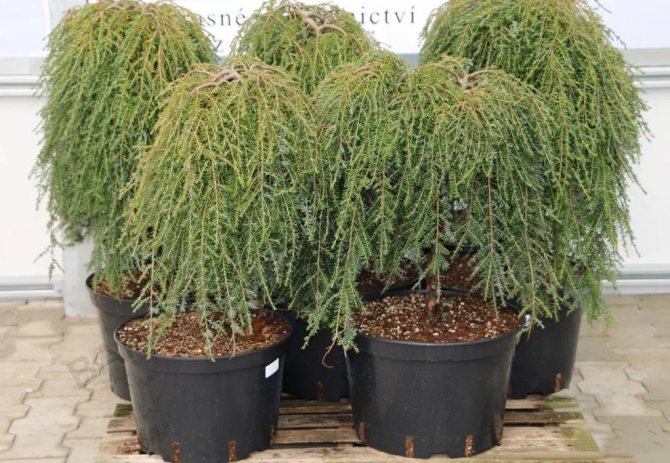

The place where the young tree should grow and gain strength, you should choose a darkened (so that the needles do not get “burns” in the spring) and closed from drafts. For the first few years, the plant should be protected from the influence of sharp air masses and polluted air. Under such conditions, it will develop poorly, it may even get sick.
Important! Pendula does not develop well on oversaturated lime and saline soil, therefore, before planting on such a site, the soil should be desalinated.
Step by step guide
Planting a tree can be broken down into several steps:
- Digging a hole. The size of the depression should be twice the size of the root system.
- Soil preparation. At the bottom of the pit, drainage is laid with a layer of 12 to 20 cm, on top is a soil mixture (sand, turf and leafy soil in a ratio of 2: 2: 1). You can use a combination of compost and soda earth in a 1: 1 ratio instead of potting mix.
- Landing. The seedling is installed exactly in the middle of the pit and covered with previously extracted soil. The place on the tree, where the root passes into the trunk, cannot be covered.
- Watering. Pour a bucket of water under one seedling, after which the roots are sprinkled with wood chips or bark.

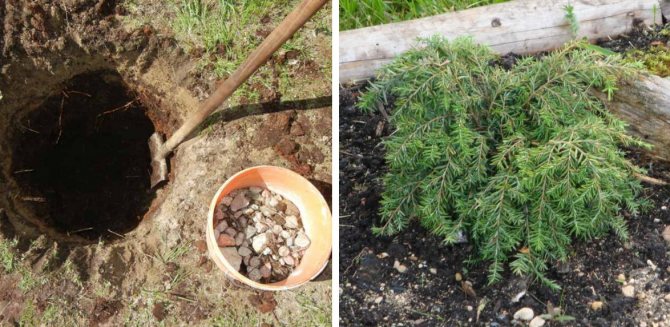
If the gardener is planting more than one seedling, you should pay attention to the fact that there should be a distance of 2 m between the hemlock.
Content
- 1 Historical information and name 1.1 Plant name in other languages
- 5.1 Natural growing conditions
- 8.1 Applications in the pulp, paper and wood processing industries 8.1.1 Applications in sawn timber
- 8.3.1 Medical Applications (Historical)
Historical information and name
The Canadian hemlock was first classified in the scientific literature in 1763 by Carl Linnaeus, in the second edition “Plants”
… He named it Pinus canadensis .. Modern name Tsuga canadensis at work
“General treaty on conifers”
in 1855 the tree was given by Elie-Abel Carriere farmer-online.com.
Its generic name Tsuga
the tree received the Japanese name for one of the local species. Specific epithet
canadensis
translated from Latin as “Canadian” and indicates the natural area.
Plant name in other languages
| Language | Name |
| English | Хемлокfarmer-online.com, Eastern Hemlock, Canadian Hemlock, Hemlock Spruce |
| Hungarian | Canadian pine |
| Голландский | Eastern hemlock |
| Danish | Østamerikansk Hemlock |
| Italian | Canadian spruce |
| Lithuanian | Canadian train |
| German | Canadian hemlock |
| Polish | Choina kanadyjska |
| Finnish | Canadian hemlock |
| French | Pruche du Canada, Tsuga du Canada |
| Czech | Canadian hemlock |
